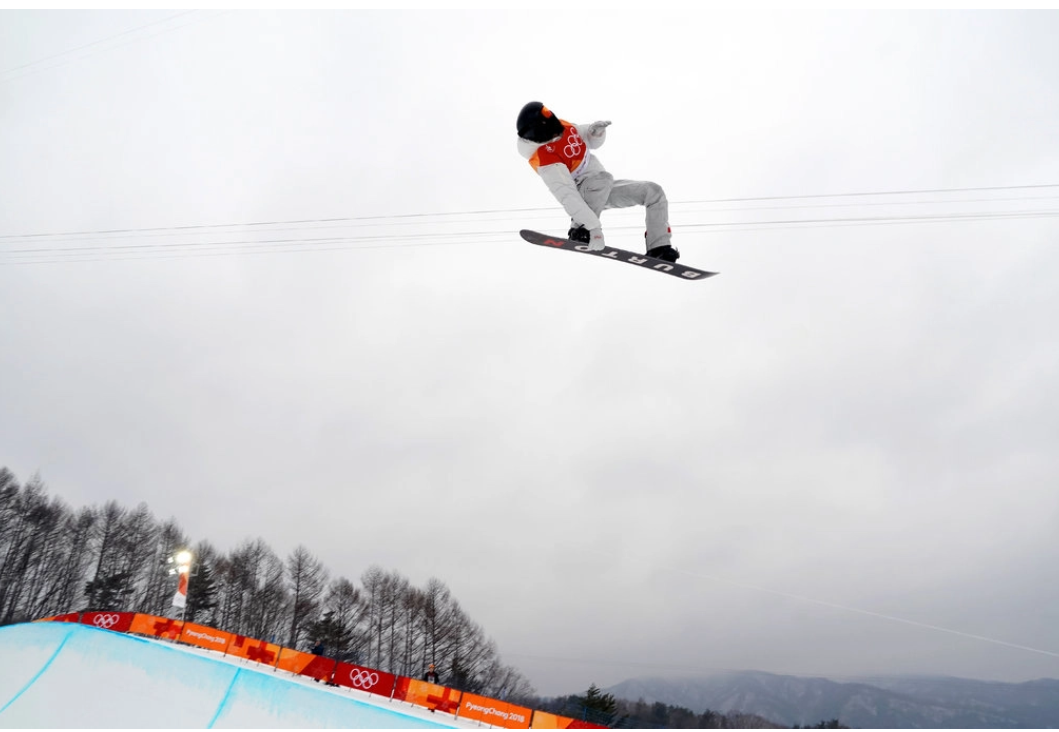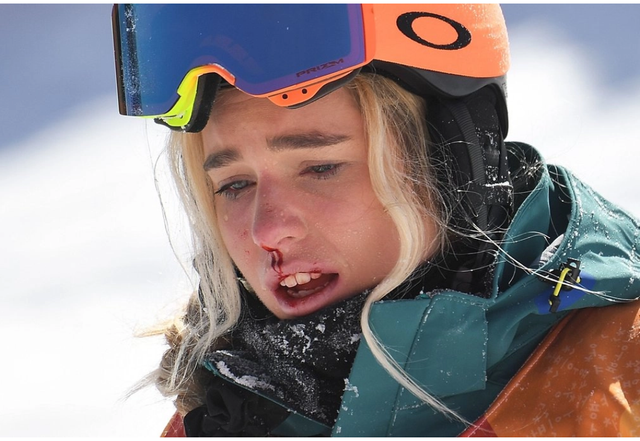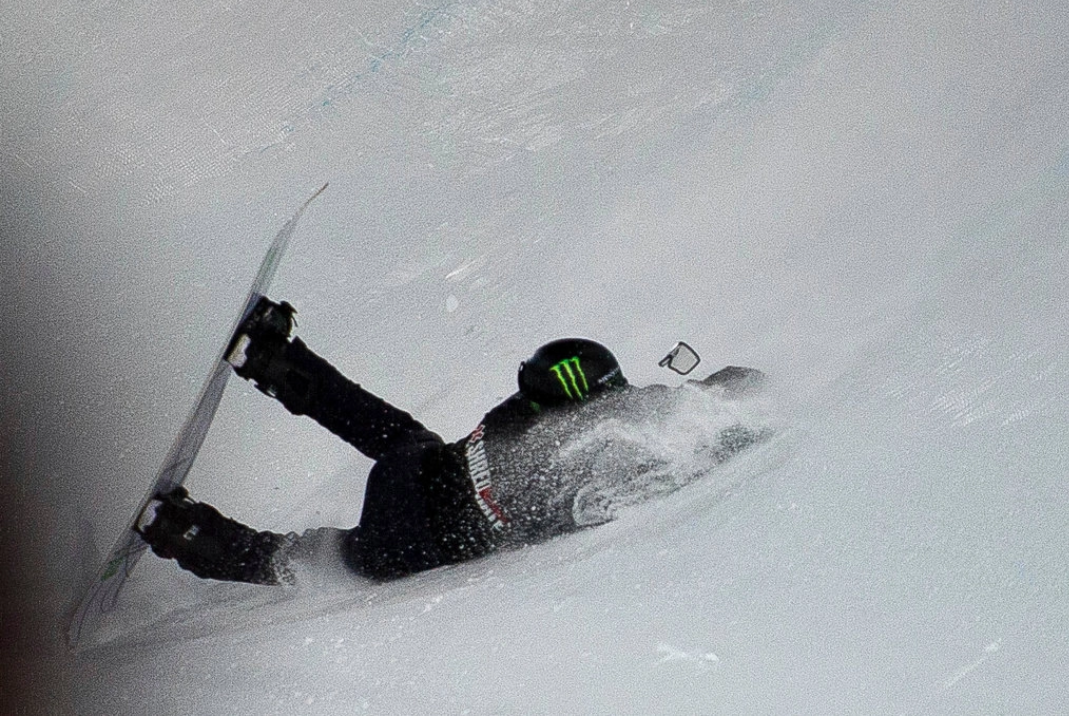Shaun White, Amid Bolder Tricks and Bigger Risks, Keeps Up and Wins Gold..
OLYMPICS:
PYEONGCHANG, South Korea — Shaun White’s train of thought was briefly derailed on Tuesday by the music blaring at Phoenix Snow Park. The song was “Ain’t No Mountain High Enough,” and the lyrics seemed fitting: “No wind, no rain, nor winter’s cold can stop me, baby … ”

White, 31, had just produced two near-perfect halfpipe runs to lead the field in the qualifying event. On Wednesday, he proceeded to outdo himself and everyone else in the final. He won his third gold medal in four trips to the Olympics with a masterly final run that earned him 97.75 points and a narrow victory over the Japanese teenager Ayumu Hirano, who had posted a 95.25 on his second run.
White’s 11 competitors averaged 21.9 years of age, led by Hirano, 19, who last month became the first snowboarder to pop back-to-back 1440s, or four revolutions in competition. Before he succeeded, he had several mishaps, including slamming into the wall on a double cork 1440 and injuring his left knee and liver.
When White was Hirano’s age, he won the first of his two Olympic titles with a run that included two 1080s.
Playing catch-up with the sport he revolutionized, White uncorked two 1440s in the final — including the same trick that he badly missed in a recent practice session, resulting in a gash that required 62 stitches. “I watched these young guys do amazing runs and it fired me up,” White said.

certainly did. Hirano had nailed a ridiculous series of stunning flips and twists on his second run, but he fell on his third and final ride. That left the door open for White, who delivered the run of his life to win the third gold medal of his career and his first since 2010. He finished fourth in Sochi four years ago.
The quest for more complex tricks is coded in the DNA of adrenaline-seeking athletes like White, passed down from generation to generation.
“It’s just the evolution of the sport,” White said.
But in pushing the envelope, the athletes are also pushing their own luck.
Conspicuously absent from the competition was the 2014 Olympic champion Iouri Podladtchikov, who withdrew last week because of the lingering effects of a head injury that he sustained during a fall at last month’s Winter X Games in Colorado. Podladtchikov, 29, participated in one practice at Phoenix Snow Park before releasing a statement saying it was “in no way safe or responsible” for him to compete. On Twitter, Podladtchikov wrote, “Unfortunately, my brain needs time to recover from the bruises and I will not be able to compete.”
A gloom fell over the halfpipe on Wednesday when 16-year-old Yuto Totsuka, the youngest finalist, ricocheted off the wall during his second run and spun out. He landed hard on his side, injuring his hip. He was tended to by paramedics, who immobilized him on a sled and carted him off the course. Japan’s team manager said Totsuka was conscious and had been taken to a nearby hospital. His injuries were not deemed to be serious.
The day before the men’s final, the 17-year-old American Chloe Kim performed two 1080s — as White had 12 years before — on her way to the gold in the women’s halfpipe. During her runs, Kim’s family members watched anxiously from the bottom of the hill. Asked which trick made her the most apprehensive, Kim’s mother, Boran Yun, said, “the whole run, from the beginning to the end.”

While Kim celebrated, one of her fellow teenage competitors, Emily Arthur of Australia, assessed the damage after she face-planted near the end of her third run. Arthur, 18, who finished 11th, remained facedown in the snow for several seconds before she shakily got back on her feet. She had a bloodied nose, a swollen lip and a swollen eye, and she said her head hurt, but she later told an Australia Channel 7 reporter, “I’m good and I’m alive.”
Roughly 7,000 miles away, Kevin Pearce was rattled by Arthur’s fall as he watched the final from his home in Vermont. “It looked so bad that I just hope she takes it seriously enough and gets the help she needs,” Pearce said in a telephone interview.
According to an Australian team official, Arthur was checked by a team doctor, who didn’t believe she had suffered a concussion but said that she would be monitored for the next 36 hours.
Arthur’s crash reminded him of a bad spill that he walked away from during a U.S. qualifier before the 2010 Games. For the next several days his head didn’t feel right, Pearce said, but he kept his symptoms — nausea, sluggishness and mental fogginess — to himself. He was expected to challenge White for the gold medal at the Vancouver Games, and he did not want to jeopardize his chances of making the Olympics.
Less than two weeks later, Pearce sustained a traumatic brain injury during training when he hit his head on the edge of the halfpipe. He remained in a coma for weeks. In retrospect, he said, he believes that he sustained a concussion in the earlier fall and that it contributed to the later crash that ended his competitive career.
After Podladtchikov, known as IPod, pulled out of the Olympics, Pearce wrote him a message on Instagram with praise for the wisdom and courage “to give up a shot at another gold medal. To me, it was unbelievable that he was able to know that his head wasn’t in the right place.”
Image
Chloe Kim during the halfpipe final on Tuesday, when she won the gold medal.CreditChang W. Lee/The New York Times
Pearce hoped Arthur would show the same prudence. “I just hope she can take it from people like myself and IPod and take care,” he said. “With the brain, you just never know if you’re O.K. until it’s too late.”
Pearce and his older brother Adam, whom he followed into snowboarding, have called for a concussion-management protocol that would require young athletes to undergo baseline testing — a computerized assessment that measures reaction time, memory capacity, speed of mental processing, and executive functioning of the brain. Then, if they crash, they can be tested and have those scores compared with their baseline numbers.
“We’re not saying that snowboarding is too dangerous,” Adam Pearce said in a telephone interview, “but there has to be common sense. Why can’t there be more attention paid to when things maybe don’t go right?”
In the aftermath of his crash, the Pearce brothers established a nonprofit organization, LoveYourBrain, to raise brain health awareness. Kevin Pearce, 30, still experiences double vision, but his sight has improved enough that he recently was able to ditch the corrective glasses that he had been wearing for the past eight years.
March is Brain Injury Awareness Month, and Pearce and his brother have been preparing for international programs aimed at cultivating resilience and community through yoga, Pearce’s latest passion. “I think it’s so awesome to take that time out of the day to be mindful,” he said, “and I don’t believe I’d be saying this right now if I was getting ready to compete in the Olympics. That’s not where my head was.”
Pearce and his brother, who is vacationing in the Bahamas, planned to FaceTime during the men’s halfpipe final. Pearce said he could put himself back in their boots, “being at your most nervous place ever in your life and then throwing down the most gnarly tricks.”
Hee wouldn’t trade places with any of them. Not even his former rival White, whose longevity and steely composure under pressure amaze him, but, he said, “I don’t know how many people benefited from me when I was snowboarding, how many lives were impacted by my tricks. Now I am hearing how I’m changing so many people’s lives. It’s pretty cool.”
Sources copied:
By Karen Crouse
Feb. 13, 2018
She is like a bird!
Exactly
You got a 0.82% upvote from @mercurybot courtesy of @sanobarshah!